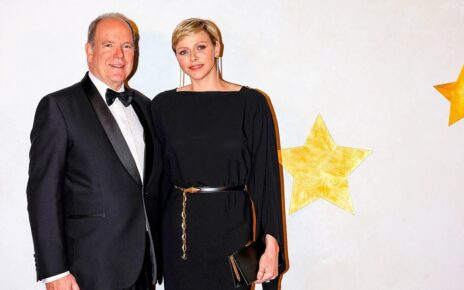With global box office receipts already exceeding $100 million, “Smile” is the breakout horror hit of 2022. And while pundits largely put the film’s success down to Parker Finn’s spooky premise and a razor-sharp marketing campaign, its secret sauce is arguably Cristobal Tapia de Veer’s inventive score. Built around an obscure instrument that mimics human growls and groans, the otherworldly soundscape adds a layer of dread to “Smile” that lingers long after the credits roll.
“Besides being the creepiest score of the year, Parker wanted it to be original,” Tapia de Veer says of the director’s original brief. To achieve that formidable goal, the Chilean-born composer knew that he had to sidestep the genre’s obsession with synthesizers. “In the last few years, there has been an obsession with retro sounds from the ’80s,” he says. “It’s very hard to plug in a synthesizer and not sound like John Carpenter when you start doing creepy things.”
Creepy strings were also off the table given their hallowed status in horror. Instead, Tapia de Veer turned to the daxophone, which is essentially a thin plank of wood that is played with a violin or double bass bow. “I was interested in it because you can play notes that sound like human voices,” he says, before adding drily: “it’s pretty weird sounding.” The daxophone became the lead instrument for the score, although synthesizers were still used sparingly.
Instead of questioning Tapia de Veer’s unique choice of instrument, the director was immediately supportive. “I told Parker about it very early on and he was really into the idea of emulating an evil laugh or groan,” he says. First, the Emmy-winning “Black Mirror” and “The White Lotus” composer had to track down — and then learn how to play — the instrument. “I know how to use a bow,” Tapia de Veer says. “So I basically just improvised.”
Before too long, the composer was generating all kinds of sinister sounds. “I learned how to make the growling and screaming sounds pretty fast,” he says. “And for a horror movie, it was just a language that I could understand and use.” In fact, the daxophone’s disruptive tones became one of the film’s central motifs.
As fun as that exercise was, Tapia de Veer will revert to more traditional instruments for the second season of “The White Lotus.”
Initially, he wasn’t sure he could return due to “Smile” commitments. The composer began by retooling the theme song and then fell in love with the project all over again. “They asked me to write music that incorporates operatic elements and instruments that evoke the Italian location,” he says. Tapia de Veer onboarded longtime collaborator Kim Neundorf to help lighten the load and together they have crafted “a really interesting score” that has been “adapted to Sicily.”
In many ways, Tapia de Veer’s TV work primed him for features. He insists that the approach is exactly the same and likens making music for a film to scoring a pilot. “In a feature you have one moment for every piece of music and then it’s over,” he says. “In a pilot, you have to define everything too, it has to be pretty much all there as if it was a movie.” The main difference arises as episodes progress and new music is created further down the line.
Tapia de Veer credits his Emmy-winning score for “The White Lotus” for opening doors for him in the US. He now hopes that “Smile” will do the same thing for him in the film industry. “Maybe I’ll get more calls for horror,” he wonders aloud. “I love horror; it might be my favorite thing to watch.” However, he doesn’t want to be typecast. “I’m not a specialist, I would like to do other projects… but I do love horror a lot.”
Read More About:
Source: Read Full Article

